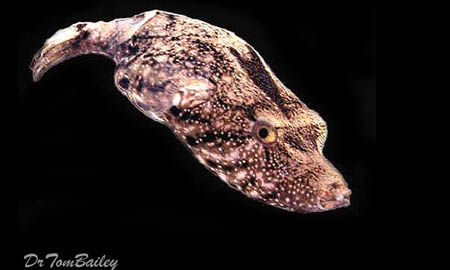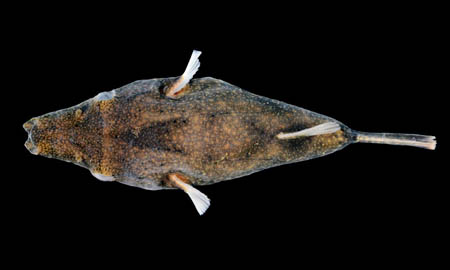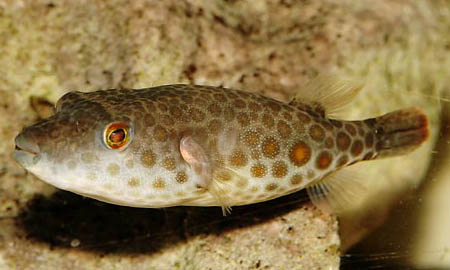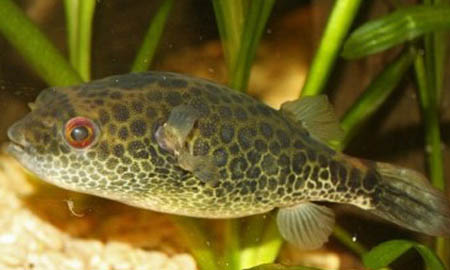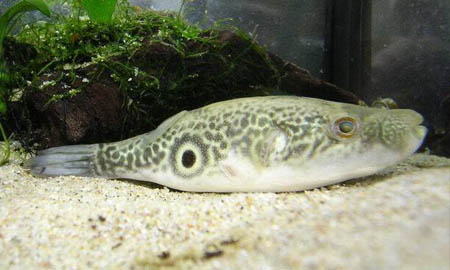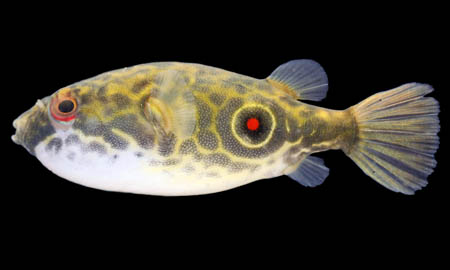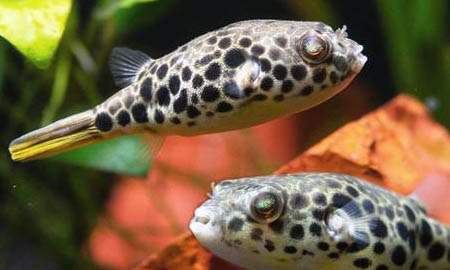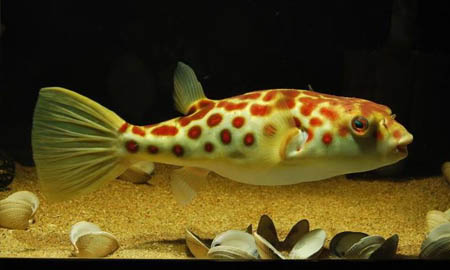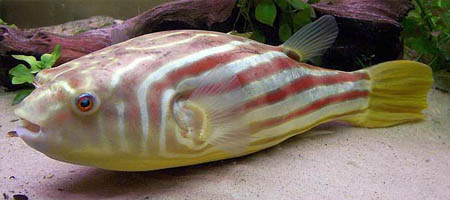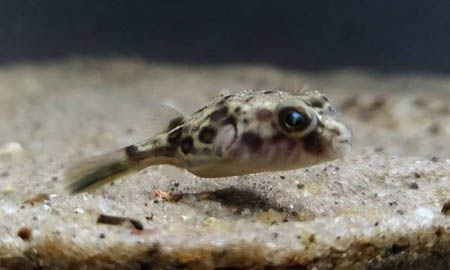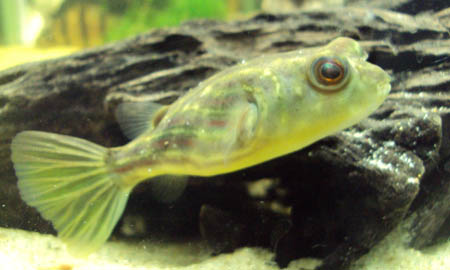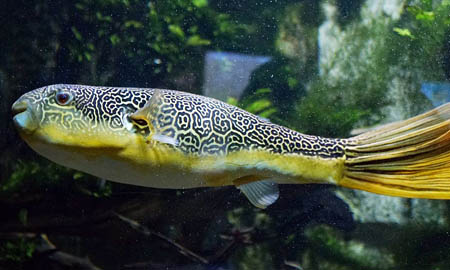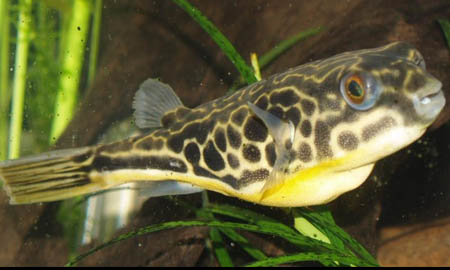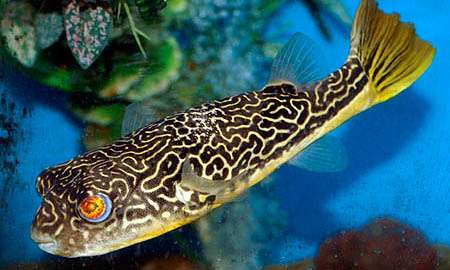Scientific Name: Tetradon Palembangensis
Common Names: King Kong Puffer/ Humpback Puffer / Dragon Puffer / Palembang Puffer
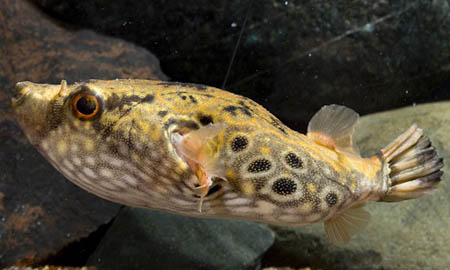
Area of distribution: Thailand, Indo-China, Malaysia, Borneo
Max Size: 8 Inch / 21 cm (although larger specimens un-documented specimens have supposedly been seen before)
Water Temps+ Parameters: 74 - 80F / 23 – 26’C - pH:7.5 - 8.5
Recommended min. tank size: 40 US gallons / 150 liters (for a single specimen)
Level of activity: Semi-Lurker (although activity levels vary from puffer to puffer).
Care: As with any scaleless fish, they are extremely sensitive to bad water quality and puffers are considered very messy eaters, so care should be taken to always clean up any leftover food items and to ensure your aquarium has suitable filtration to handle their bio load.
Diet: These puffers are Piscivores by nature and opportunistic feeders, who like to ambush prey as they pass by. So they will NOT hunt snails and prefer a meatier diet of foods such as clam meat / fish / mussels / FD Krill / Shrimp, Nightcrawlers etc.
Sexual Dimorphism: Unknown
Breeding: Have been known to breed in home aquariums
Extra notes / pre-cautions: Palembangs are not overly aggressive to their own kind and can be sometimes be housed together or with T.Suvatti given a complex enough environment to break up lines of sight.
Although they don’t often bury themselves, its recommended having a sand substrate so that they can bury themselves if they feel inclined to.
Sometimes gets confused with T.Suvatti due to similar appearance and nature.
Common Names: King Kong Puffer/ Humpback Puffer / Dragon Puffer / Palembang Puffer

Area of distribution: Thailand, Indo-China, Malaysia, Borneo
Max Size: 8 Inch / 21 cm (although larger specimens un-documented specimens have supposedly been seen before)
Water Temps+ Parameters: 74 - 80F / 23 – 26’C - pH:7.5 - 8.5
Recommended min. tank size: 40 US gallons / 150 liters (for a single specimen)
Level of activity: Semi-Lurker (although activity levels vary from puffer to puffer).
Care: As with any scaleless fish, they are extremely sensitive to bad water quality and puffers are considered very messy eaters, so care should be taken to always clean up any leftover food items and to ensure your aquarium has suitable filtration to handle their bio load.
Diet: These puffers are Piscivores by nature and opportunistic feeders, who like to ambush prey as they pass by. So they will NOT hunt snails and prefer a meatier diet of foods such as clam meat / fish / mussels / FD Krill / Shrimp, Nightcrawlers etc.
Sexual Dimorphism: Unknown
Breeding: Have been known to breed in home aquariums
Extra notes / pre-cautions: Palembangs are not overly aggressive to their own kind and can be sometimes be housed together or with T.Suvatti given a complex enough environment to break up lines of sight.
Although they don’t often bury themselves, its recommended having a sand substrate so that they can bury themselves if they feel inclined to.
Sometimes gets confused with T.Suvatti due to similar appearance and nature.



